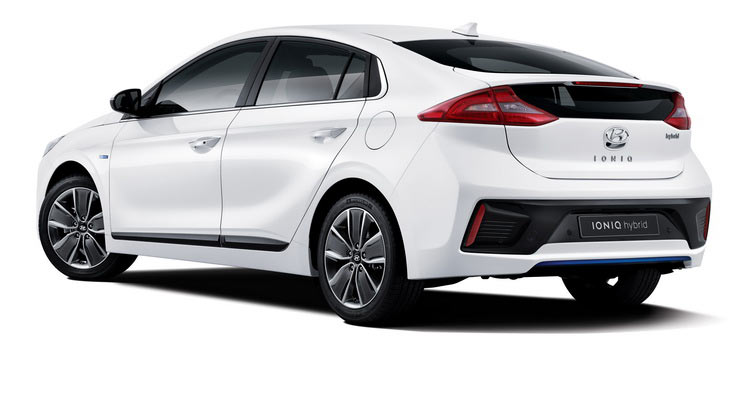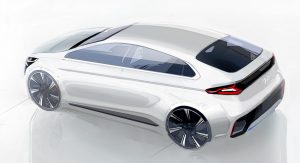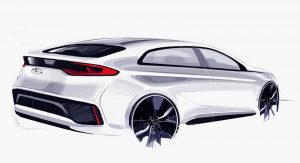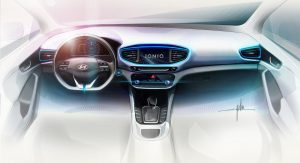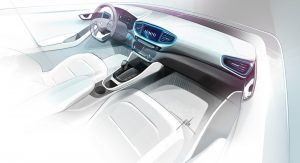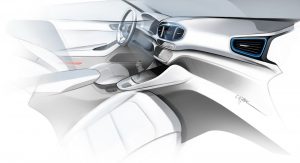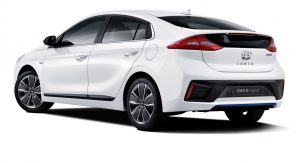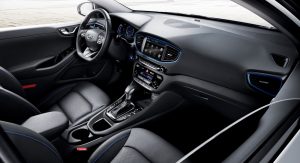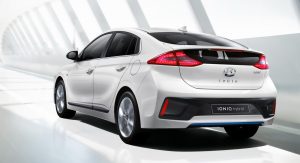Hyundai is finally presenting its Prius-rivaling IONIQ hybrid to the world, after showing the car off at their Namyang R&D Center in South Korea.
The IONIQ is built on a chassis created specifically to carry three efficient and ultra-low emission powertrains. The engineering team built the car out of Advanced High Strength Steel, combined with lightweight aluminum – thus saving around 12.6 kg (45%) of weight simply by casting bodywork such as the hood, tailgate and suspension components out of this material.
As for the High Strength Steel, that’s what the crash structure is made out of, which is a good thing considering how energy absorption is more than just necessary in today’s industry.
“IONIQ Embodies Hyundai Motor’s new thinking and bold ambitions for the future. This world-class dedicated hybrid will be the starting point of our future mobility,” stated Rag Jung, Head of Project Management Division at Hyundai Motor R&D Center. Considering how this is pretty much the South Korean manufacturer’s first attempt at future mobility, it’s a pretty good start, even though the Prius will be a tough opponent.
On the road, Hyundai says that the IONIQ was created with dynamic ride and handling at its core – something that should set it apart from the previously mentioned Prius. The batteries have been positioned low and up-front, in order to achieve a low center of gravity which enables responsive and stable cornering, while the dual lower arm multi-link rear suspension should provide even more handling prowess.
Of course, whether that is indeed the case or not, will be determined by future press reviews, but so far, everything sounds pretty good.
The IONIQ range will feature a choice of electric, plug-in hybrid and hybrid powertrains, which is actually a world first for a single model. At its core, there’s the 1.6-liter Kappa GDi engine developed exclusively for Hyundai’s hybrid engines. Combined with the permanent magnetic electric motor, it delivers 105 PS and 47 PS (engine & motor respectively).
Within the engine itself, Hyundai has achieved a class-leading thermal efficiency of 40%, while the head and block is split for optimized cooling. On top of that, the 200 bar high pressure 6-hole direct fuel injector further improves on the consumption and of course CO2 emissions.
As for the Lithium Ion Polymer battery, it delivers “outstanding” charge and discharge performance according to Hyundai, while optimizing output from the high voltage motor, which in turn allows for rapid regeneration.
Power distribution is controlled by a hybrid-exclusive Dual Clutch Transmission (DCT), which offers class-leading power transmission efficiency (95.7%), delivering a fast response, strong acceleration performance and smooth gear changes.
In order to see the IONIQ in person, you’ll need to book a flight to Geneva in March and visit the Motor Show.







